TABLE OF CONTENTS
Sit back, relax, and get ready to read about the highest yielding strains for your garden. Whether you’re a new or seasoned grower, our strain guide covers the industry’s most raved about big yielders. From sativas to indicas and everything in between, we bring you a range of strains to keep you busy all season long. Ready to start growing trichome-laden buds? Here are our top picks for the highest-yielding strains you can find right now.
1. Big Bud
It’s all in the name. Big Bud’s award-winning strain delivers high yields to keep you stocked for months. Sensi Seeds bred this strain by combining Skunk #1, Northern Lights, and Afghani genetics. Big Bud prefers warm and dry climates, whether grown indoors or outdoors. Just watch out for heavy flowering. You’ll need to support these weight-carrying branches.
2. Critical Mass
Critical Mass’ high-yielding plants come with an overload of resin on its buds. This indica-dominant strain is easy to grow and stays short and bushy. Its colas grow long and heavy, so you’ll need to watch out for excess moisture as they reach maturity. If done right, you’ll end up with skunky and citrusy-smelling buds that deliver a heady high.
3. Northern Lights
As a nearly pure indica, Northern Lights delivers a long-lasting and balanced high. Indoor and outdoor growers can easily grow this strain. Its flowering period takes between 7 and 9 weeks. At its peak maturity, you can smell its skunky, spicy, and citrus notes. It’s the perfect strain to use for energy during the day.
4. White Widow
Straight from the Amsterdam coffeeshop scene, White Widow is a cross between Brazilian and Southern Indian landrace strains. White Widow produces bountiful yields with tons of resin on its buds. While it’s resilient against mold and pests, it thrives best in indoor gardens. Wait just 8 to 9 weeks for a fresh new supply of buds.
5. Blue Dream
Blue Dream is one of the most popular strains on the market, and rightfully so. It’s a high-yielding, flavorful, and potent strain that delivers on all fronts. Plus, it’s widely available across most markets. As a sativa-dominant hybrid, Blue Dream delivers THC potency levels between 17% and 24%. Inside or outside, Blue Dream performs well in either environment.
6. Cheese Quake
TGA Subcool Seeds hit it out of the park with its Cheese Quake creation. This indica-leaning hybrid combines Querkle and Cheese genetics. Experience balanced effects on the mind and body and a funky and sour aroma reminiscent of cheese. Hints of sweet fruit balance out the funk. This strain thrives indoors as long as you top it during early vegetation for a huge yield.
7. Purple Trainwreck
California is known across the world as a state with fine purveyors of high-yielding strains. Purple Trainwreck is no exception. Easy to grow and pungent, this strain was bred by Humboldt Seed Organization. This energizing strain is a cross between Mendocino Purps and Trainwreck. In just 8 short weeks, you can have a fully mature plant in your indoor or outdoor garden.
8. Critical Kush
Bred from two iconic strains, OG Kush and Critical Mass, Critical Kush is a high yielder. It features its Critical Mass’ signature sweet, fruity, and citrus aroma and flavor. From its OG Kush side, it carries earthy notes and high THC levels. This strain prefers indoor growing environments due to its vulnerability to high humidity climates and mold.
9. Original Glue
Original Glue, also known as Gorilla Glue #4 and GG4, is an indica-dominant strain. While most growers love the strain for its sticky resin production, it also has big bud yields. It won’t grow super tall and can resist most molds, diseases, and pests. If you’re looking for a sleep-inducing strain for your evening highs, this one’s the best strain to grow.
10. Thai Stick
Thai Stick is a pure sativa. Bred from a Thai landrace strain, this strain has been conditioned to grow massive yields outdoors. It can reach well over 6 feet, so you’ll have to have enough space. Its flowering time is longer than most, but the payoff is worth it. Make sure to grow this strain in a warm and dry climate. Cold temperatures can stunt its flower growth.
11. Super Silver Haze
If sativas are what you’re looking for, look no further than Super Silver Haze. As a multiple-time Cannabis Cup winner, this strain can grow into connoisseur-grade weed. Super Silver Haze requires careful feeding to prevent it from getting out of hand. This strain responds well to SCROG or low-stress training. Its heavy colas require some advanced training techniques.
12. Amnesia Haze
West Coast Haze meets Amsterdam weed. Amnesia Haze’s high yields are worth the long flowering period (up to 12 weeks). Its genetics feature Jamaican and South Asian landrace strains. Unlike most sativas, this strain grows short and bushy. If you have the patience to care for this plant, you’ll be highly rewarded.
Using a Lux Meter To Increase Yields For Cannabis
There are some ways that the Lux Meter can be used to increase your cannabis yields. If you want to have a higher yield and healthy growth of your cannabis plants, it is best to consider the Lux Meter, which is quite affordable. In addition, you are able to optimize and measure the amount of light that you are able to use in your cannabis grow operation. In so doing, it will increase your cannabis yields.
If you really want maximum cannabis yields, then you should ensure that your plants receive the right amount of light. You can ensure this by using the Lux Meter. Let us know look much closer at this device.
The Lux Meter
This device is very simple to use in your cannabis grow room. Now, why would you use this device instead o the PAR meter or the quantum light meter? The main reason is that it is less expensive. You could pay as much as a thousand bucks for the PAR meter, but the Lux Meter is so much less. In fact, you can get a Lux Meter for just twenty dollars. Why do you need a light meter like this?
The Benefits
This device helps to increase cannabis yields. Obviously, this would be a benefit to the cannabis grower. When the Lux Meter is used, it helps to determine the optimum spots that is inside the grow room or the right distance between the light and the plants. You will be able to tell when the light is insufficient to result in cannabis yields. The Lux Meter also informs you when you need to replace grow light bulbs since after a while, they have to be replaced. So, with this device, you will be able to tell the specific time when the bulbs have to be replaced.
Plant Issues
You won't be fortunate to enjoy cannabis yields, if your lighting is too much or too little. With this light meter device, you will be able to make sure the plant's growth is health in every stage. In other words, you need the right amount of light that is not too little or too much. This will reduce any stress on the plants; subsequently put a stop to future issues such as bleaching and light burn.
The Right Amount of Light
Now, the question would be what the right amount of light would be. Lighting depends on the grow cycle that your plant might be in at any given time. In the seedling stage, the plants are not able to take too much light. However, in the vegetative state, the plant will need sufficient light to maximize your cannabis yields. With the right lighting, your plants will grow vigorously. In the flowering stage, the same is true. Light exposure is important in the flowering and vegetative stage for maximum cannabis yields and bigger buds.
- For seedlings and clones, you would need up to 7,000 Lux
- For plants in the vegetative stage, you should consider between 15,000 and 50,000 Lux
- For plants in the flowering stage, you would need to start with 45000 Lux and go up to no more than 65,000 Lux
- The maximum Lux recommended is 75,000
If you were to increase the light above the threshold, it would reduce the returns on your cannabis yields. If you go to 85,000, then that is enough. It is best to keep it at 75,000.
The Lux Meter measures the light to make sure that it is at the right height so that you can determine the proper amount to use. It should be evenly distributed as well so that it reaches every plant, even those in a blind spot.
Master Grower Tips For Better Cannabis Plant Yields
For all you aspiring cannabis gardeners, our 10 master grower tips for better yields can help you optimize your garden for bigger and more flavorful yields. Master growers in the industry have spent decades perfecting the art of caring for cannabis plants from seed to harvest. Whether you're growing indoors or outdoors, these expert recommendations can help improve and polish your methods.
1. It’s in the Genes
The first of 10 master grower tips is starting off with the right genes. As with any gardening project, what you reap depends on what you sow.
Starting off with high-quality cannabis genetics in the form of cannabis seeds or clones is the best way to ensure you get high-quality flower buds. Researching for reputable seed banks that deliver to your area shouldn't be overlooked.
Even with the highest-quality genetics, things can still go wrong. Each cannabis strain has unique nutrients, lighting, soil, and watering needs.
It's not enough to buy the best. You have to consider your genetics unique growing characteristics. Do they grow fast and tall? Do they require extra pruning? Are they prone to light stress, pests, or diseases?
2. Get Your Hands Dirty
Cannabis plants can be grown indoors and outdoors in a range of growing mediums from soil-based to soilless hydroponic systems. For simplicity's sake, let's focus on soil-based growing, which can be done indoors and outdoors.
Now, you can't use just any old dirt to contain your plant’s roots. Here are some of the characteristics you should look for in your soil.
- Texture: Cannabis plants thrive in loam soils, which are a mix of sand, clay, and silt. Loam has a light and airy texture allowing the root system to grow and absorb oxygen.
- Drainage: Your soil should also provide excellent drainage without staying too moist, which can cause root rot.
- Retention: While your soil should drain water quickly, it shouldn't be too quickly. Your soil should be able to hold the water to give the root’s enough time to absorb the water and nutrients.
- PH: PH refers to the level of acidity or alkalinity of a material. PH is measured on a scale of 1 to 14. Ideally, you want your soil's pH level to be around 6 or so. Invest in a digital pH meter to ensure your soil is not the cause of future issues.
For newbies, your best bet is to stick with a pre-made potting soil, preferably organic, to get you started. Pre-made soils are ready to use out of the bag, no pH analysis needed. Plus, many contain the key nutrients your plant needs during its formative stages.
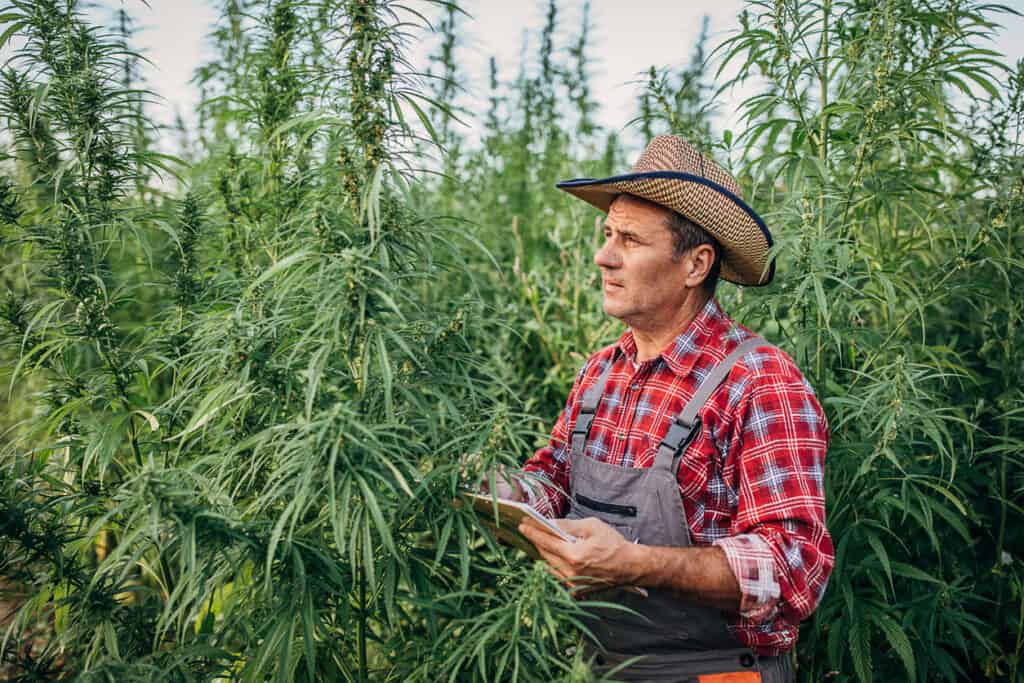
3. Feed ‘Em Right
Just like you and me, cannabis plants need the right range of macro and micronutrients to remain healthy. However, you must ensure that you're feeding your plants the right type of nutrients at the right time.
Going overboard with the feeding can result in stunted growth. In fact, when your plants are just sprouting, they won't need as many nutrients.
Pre-formulated nutrient solutions for cannabis contain the plant's 3 critical macro-nutrients: Nitrogen (n), Phosphorus (p), and Potassium (K). NPK ratios, as they’re clearly listed on the label of the nutrient packaging, change depending on the stage of growth your plant is in.
For instance, vegetative plants require higher nitrogen levels, while flowering plants require higher phosphorus and potassium levels.
In addition, you're likely to want to start with a lower-than-recommended dose of nutrients for your plants to avoid a nutrient overload. Starting with one half or even one third of the recommended amount can help you gauge how your plant reacts to ever-increasing doses.
4. Let There Be Light
Cannabis lighting options range based on your garden size and budget. Here are the few of the most common lighting options available for cannabis gardens.
- Compact fluorescent lights (CFLs): CFLs are the cheapest option for growers on a budget. While they offer a lower intensity light than more advanced setups, they are an excellent choice for young or vegetative plants that don't need high-powered lighting. Plus, they're pretty easy on energy use.
- Light-emitting diode (LED): LEDs can be pricey but the initial investments can pay off with the energy savings you'll get. LEDs can feature a full spectrum of light capable of providing the right type of light for each stage of growth.
- High-intensity discharge (HID): HID lights are the preferred lighting systems for master growers since they can provide a high power lighting for the large commercial grows. Keep in mind, these systems use a lot of energy and produce a lot of heat, which you may need to account for with temperature control.
5. Keep Your Cool
Ventilation and air flow is a critical component of your cannabis garden. Still and humid air can make your plants more vulnerable to mold and disease. Ideally, you want at least a fan to circulate the air and provide your plants with some light stress to increase their hardiness.
Installing an exhaust system can ensure that the old stale air is filtered outside of your grow tent and fresh cool air is brought in from the bottom of your tent into your plant canopy. For most small gardens, however, a small fan is all you need.
6. Come Rain or Shine
Outdoor growers can rely on their natural environment for light, soil, and water (at times). Indoor growers must carefully create an optimal and artificial environment.
This requires you to carefully regulate your garden’s temperature and humidity. Keep in mind, the right temperature and humidity levels change throughout the plant’s growing process and whether the lights are on or off.
7. Quench Their Thirst
Step 7 of 10 master grower tips deals with water. Apart from the right amount of nutrients, your cannabis plants need the right amount of water. Overwatering and underwatering can lead to many growing issues.
For instance, overwatering can create the perfect environment for mold and fungus to grow. Underwatering can dry out your plants leading to stunted growth.
If needed, give your plants less water than you think and allow them to dry out.
How do you know when it is the right time to water your plants? If the top 3 to 4 cm of your soil feel dry to the touch, it's time to water. It's safer to slightly underwater your plants and then you can give them the extra water if needed and they'll recover if they start to look wilted.
8. Practice Makes Perfect
Low-stress training techniques can yield bigger and better results if done properly. Cannabis training techniques such as pruning, topping, and other methods can ensure that your bud sites are completely exposed to the light. A plant with too much foliage can block lights to lower bud sites and restrict air flow within the canopy.
9. Timing Is Everything
If you've done everything right throughout the vegetative and flowering stages, you can end up with a plentiful harvest.
However, timing when you harvest your plant is just as important. Harvest too early and you'll lose out on your bud's reaching their full potential. When you harvest too late, they may lose potency, flavor, in aroma.
So, how do you know when it's the right time to harvest? For the most reliable way to time your harvest, look at the tiny resinous glands, known as trichomes, growing on your buds.
These microscopic glands start off clear, turn milky white, and become golden yellow when they're ready for harvest. When some of your trichomes have reached this peak ripe stage, it's time to harvest.
“
There are over 300,000 jobs in the cannabis industry. CTU trained me for one of them!

Makes $24.50 @ THC +
10. The Final Stretch
After harvest, the work is not over yet. The drying and curing process allows you to remove the excess moisture from your buds and refine their flavor and aroma, respectively.
When drying your plants, cut individual branches and hang them from a hanger in a dark, cool, dry room. Drying can take anywhere from 1 to 2 weeks. You'll know they're done drying when your branches produce a snapping sound when bent.
Curing your cannabis is the final portion where they're placed in airtight and UV-protected jars to age and refine. Check on your buds everyday and open the jar in a process known as burping or breathing for 10 to 30 minutes.
Leaving the jar open can introduce fresh air. Curing can take anywhere from a month to several months depending on your preference.
As you can see, growing cannabis is as easy or complex as you want. While doing the bare minimum can produce decent yields, continually perfecting your cultivation practices can increase the quality of your flower. Become a master grower with the CTU master grower certification program!
If you're interested in growing like the pros do, enroll in Cannabis Training University’s cannabis certification program.
CTU’s online weed growing training makes it easy to go from complete beginner to a master grower. Our affordable cannabis training program gives you access to course content for 12 weeks so you can learn at your own pace. it's never been easier to become a marijuana growing master!
Master Grower Certification
Now that you know which strains produce some of the most bountiful harvests, you can apply your knowledge to your garden. For a complete breakdown of every step of the growing process, enroll in CTU’s online cannabis college. Our courses are meant for growers of all skill levels. Learn how to grow, in general, or perfect your technique with the latest cultivation techniques available. Enroll in cannbis training today.

Gavin Kushman
Gavin is a worldly adventurer and cannabis connoisseur, embarking on journeys that take him to the far corners of the globe to explore and document the varied effects, flavors, and histories of both renowned and lesser-known strains. From the misty high-altitude farms of the Hindu Kush highlands to the vibrant cannabis cafes of Amsterdam, Gavin's quest for knowledge spans continents. A recognized authority in the cannabis industry, he frequently lends his expertise to leading publications such as Cannabis Training University, where his captivating blog articles chronicle his unique experiences with different cannabis strains.


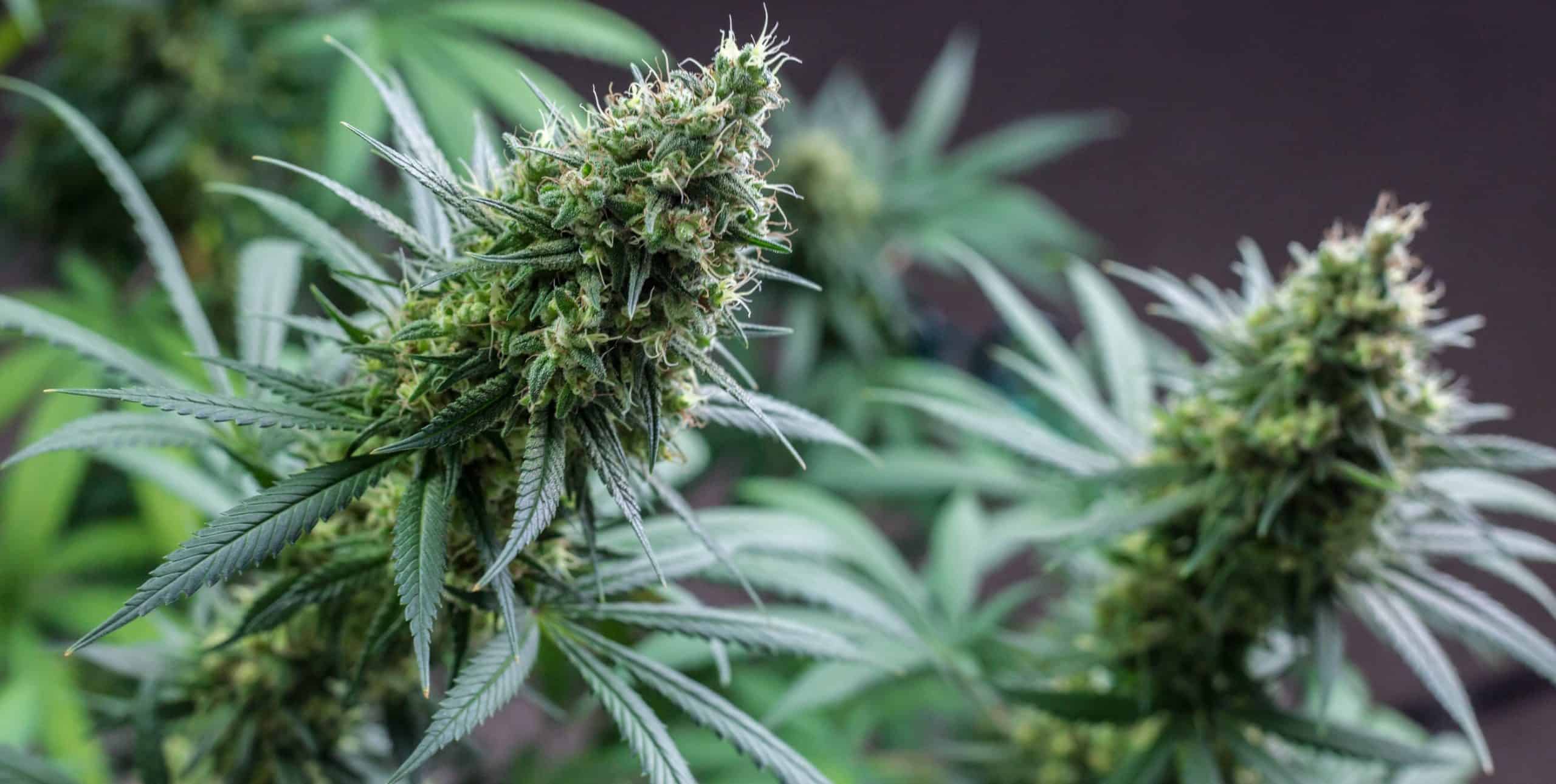



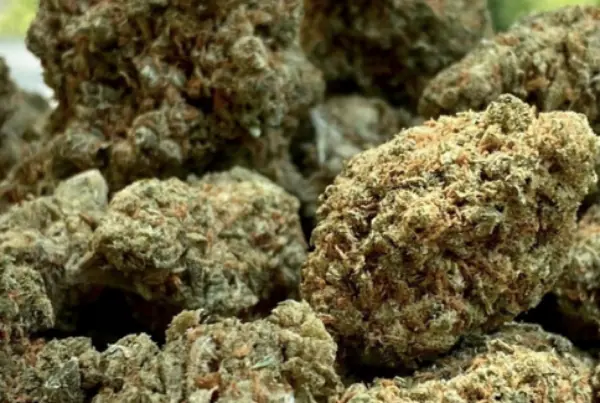
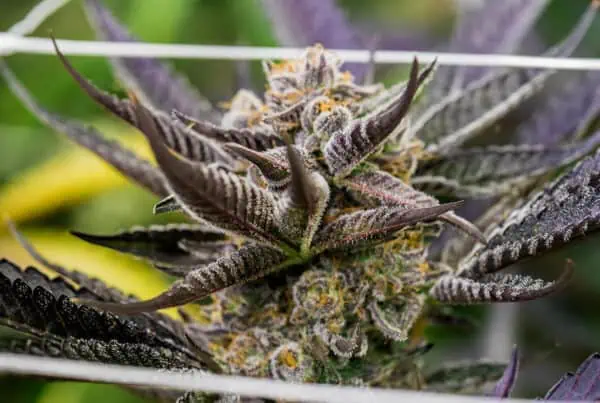


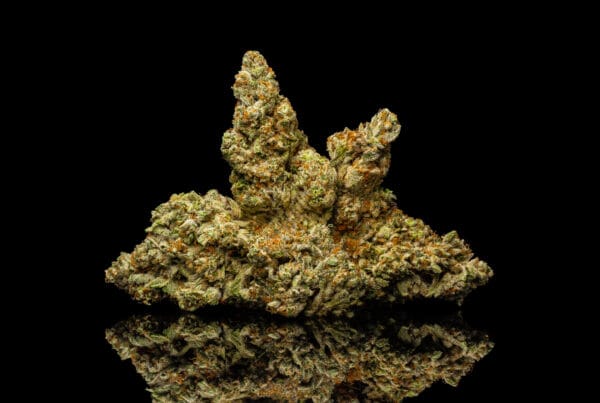

 Jeff was involved in an accident where he endured a traumatic brain injury. He had a week-long stay in ICU where brain surgeons
Jeff was involved in an accident where he endured a traumatic brain injury. He had a week-long stay in ICU where brain surgeons  100% risk free money back guarantee within 48 hours after purchase if student has not completed any of the courses or exams.
100% risk free money back guarantee within 48 hours after purchase if student has not completed any of the courses or exams.